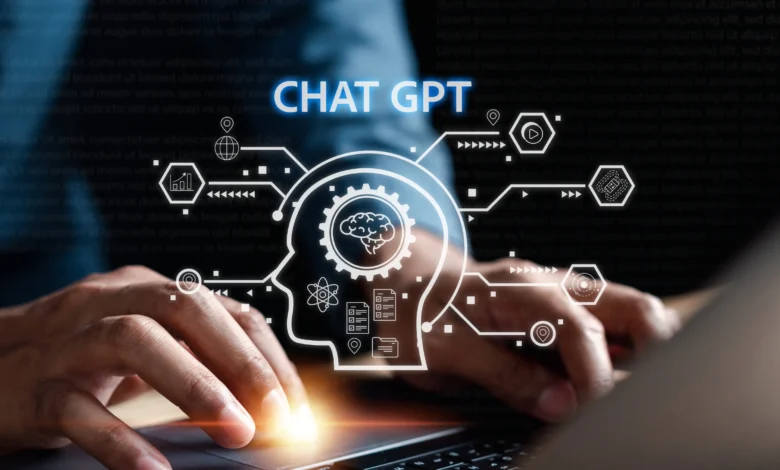ChetGPT: A Deep Dive into the Next Big Thing in AI Conversations

Introduction to ChetGPT
ChetGPT Artificial intelligence has evolved rapidly over the past few years, reshaping how we interact with technology. Among the most exciting advancements are AI-powered conversational tools. One of the names that has been popping up in discussions recently is . While the name might sound familiar to those who have heard about ChatGPT, ChetGPT has gained attention as a term that sparks curiosity, speculation, and even some confusion.
The concept of ai around intelligent conversational AI systems that aim to make interactions more natural, human-like, and practical. Many people first encounter the term when searching for new tools, apps, or services related to AI chat platforms. Whether you think of it as a variant spelling of ChatGPT or as a standalone concept, Ai represents the growing interest in AI-driven conversations.
In this article, we’ll break down what ai is all about, how it connects to conversational AI trends, what makes it appealing to users, and why this keyword has generated so much buzz online. By the end, you’ll not only understand the hype but also see how ChetGPT might play a role in the future of digital communication.
What Exactly is ChetGPT?

When you come across the keyword ai , the first thought might be that it’s simply a misspelling of ChatGPT. And in many cases, that’s true. A large portion of people typing “ChetGPT” are actually looking for OpenAI’s ChatGPT platform. But interestingly, this slight variation has taken on a life of its own, being used in discussions, social media posts, and even blog articles.
ai can be seen as more than just a typo—it has become a representation of how popular AI chat systems have become. The popularity of conversational AI is so widespread that even a small spelling difference can spark entire conversations. It shows just how integrated these tools are in our daily lives. People are not only using them for casual chats but also for business solutions, creative projects, and educational purposes.
Some people even consider ai as an emerging “brand identity” of its own, whether intentionally or not. This phenomenon illustrates how new technologies often evolve in unexpected ways. Language adapts quickly, and once a phrase like ChetGPT gains traction, it starts building its own presence on the internet.
The Rise of Conversational AI and ChetGPT’s Place in It
The growth of AI chat systems has been phenomenal. Just a few years ago, chatbots were basic tools with limited responses, often frustrating users with robotic replies. Today, systems like ChatGPT—and by extension, the idea of ai —are capable of generating detailed, human-like conversations on nearly any topic.
One of the main reasons behind this success is natural language processing (NLP). Thanks to advances in machine learning, AI systems are now able to understand context, tone, and even subtle hints in user input. This makes conversations smoother, more natural, and far more engaging. The popularity of ChetGPT reflects how far these systems have come, showing that people expect a higher level of sophistication from their AI assistants.
Another aspect that plays into ChetGPT’s rise is accessibility. Unlike older technologies that required complex setups, modern AI chat tools are available instantly through websites, apps, and even integrations with other platforms. People can jump into a conversation with just a click, making AI assistance a part of their everyday routine.
Why Are People Searching for ChetGPT?
The simple answer is curiosity. Many users who type “ChetGPT” are genuinely interested in finding conversational AI tools, but they may not know the exact spelling of “ChatGPT.” This small error doesn’t stop them from wanting to learn more or use the technology. In fact, it shows just how strong the demand for these tools has become.
For others, the term ChetGPT has become something of an inside joke or cultural reference. On forums, Reddit threads, and social media, people sometimes use “ChetGPT” intentionally as a playful nod to the popularity of AI chat systems. In a way, it’s a symbol of how conversational AI has become part of everyday internet culture.
From a practical perspective, many businesses and bloggers have also picked up on the keyword “ChetGPT” because of how often it gets searched online. This has led to articles, tutorials, and guides specifically addressing the term, ensuring that anyone searching for it will find useful information rather than being left confused.
The Benefits of Using AI Tools Like ChetGPT
Even though ChetGPT may not be a standalone product, the association with conversational AI highlights a range of benefits these tools bring.
First, productivity is a major advantage. AI-powered chat systems can assist with writing, brainstorming, coding, answering questions, and much more. Whether you’re a student working on an assignment, a professional drafting emails, or a developer debugging code, having an AI assistant saves time and effort.
Second, creativity is another key area where ChetGPT-like tools shine. Many people use them to generate ideas for stories, design projects, or business strategies. The AI’s ability to think outside the box—while still following instructions—makes it a valuable companion for creative professionals.
Finally, accessibility is critical. These tools are available 24/7, meaning you can rely on them anytime you need help. Unlike traditional support systems, conversational AI doesn’t get tired, frustrated, or limited by working hours. It’s a personal assistant that’s always ready.
Misconceptions Around ChetGPT
With any new trend, misconceptions are inevitable. One common misunderstanding is that ChetGPT is a completely different AI platform from ChatGPT. In reality, most references to ChetGPT are just alternate spellings of the same tool. However, as the term spreads, more people assume it has unique features or functions.
Another misconception is that conversational AI tools like ChetGPT are flawless. While they are highly advanced, they’re not perfect. These systems can still make mistakes, provide inaccurate information, or misunderstand context. Recognizing these limitations is important for using them effectively.
Lastly, some people fear that AI systems like ChetGPT are replacing human intelligence or creativity. The truth is more balanced. Instead of replacing people, these tools are designed to assist and enhance human capabilities. When used responsibly, they can be powerful allies rather than threats.
The Future of ChetGPT and Conversational AI
Looking ahead, the evolution of conversational AI is only going to accelerate. With ongoing improvements in machine learning, systems like ChatGPT—and by extension, the concept of ChetGPT—will become even more refined. We can expect smarter, faster, and more personalized interactions.
Businesses will increasingly adopt these tools for customer support, marketing, and content creation. Meanwhile, individuals will continue using them for learning, creativity, and personal productivity. The growing popularity of terms like ChetGPT suggests that AI chat systems are no longer niche technologies—they’re mainstream.
It’s also possible that ChetGPT itself might evolve into a recognized brand or tool. Given how quickly internet trends transform into real products or services, it wouldn’t be surprising if developers capitalize on the popularity of the term to launch something new.
Conclusion
ChetGPT may have started as a simple misspelling of ChatGPT, but it has since grown into an interesting symbol of the AI revolution. It represents not only the popularity of conversational AI but also how deeply integrated these tools have become in our daily lives. From productivity and creativity to accessibility and cultural relevance, ChetGPT highlights the many ways artificial intelligence is reshaping communication.
As technology continues to advance, the line between human and machine conversation will blur even further. Whether you call it ChatGPT, ChetGPT, or something else entirely, one thing is certain: conversational AI is here to stay, and it will keep evolving to make our digital interactions more seamless and meaningful.



